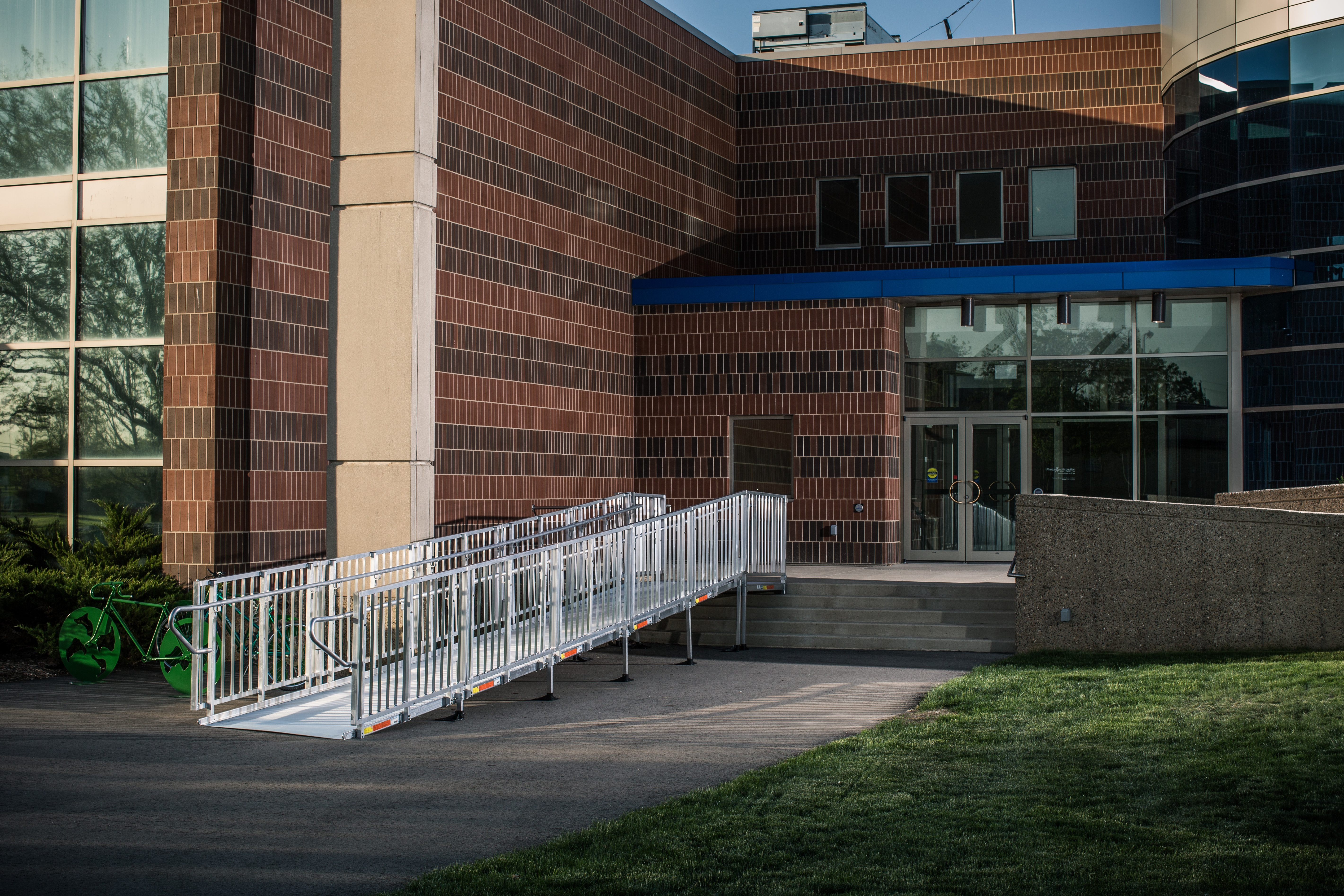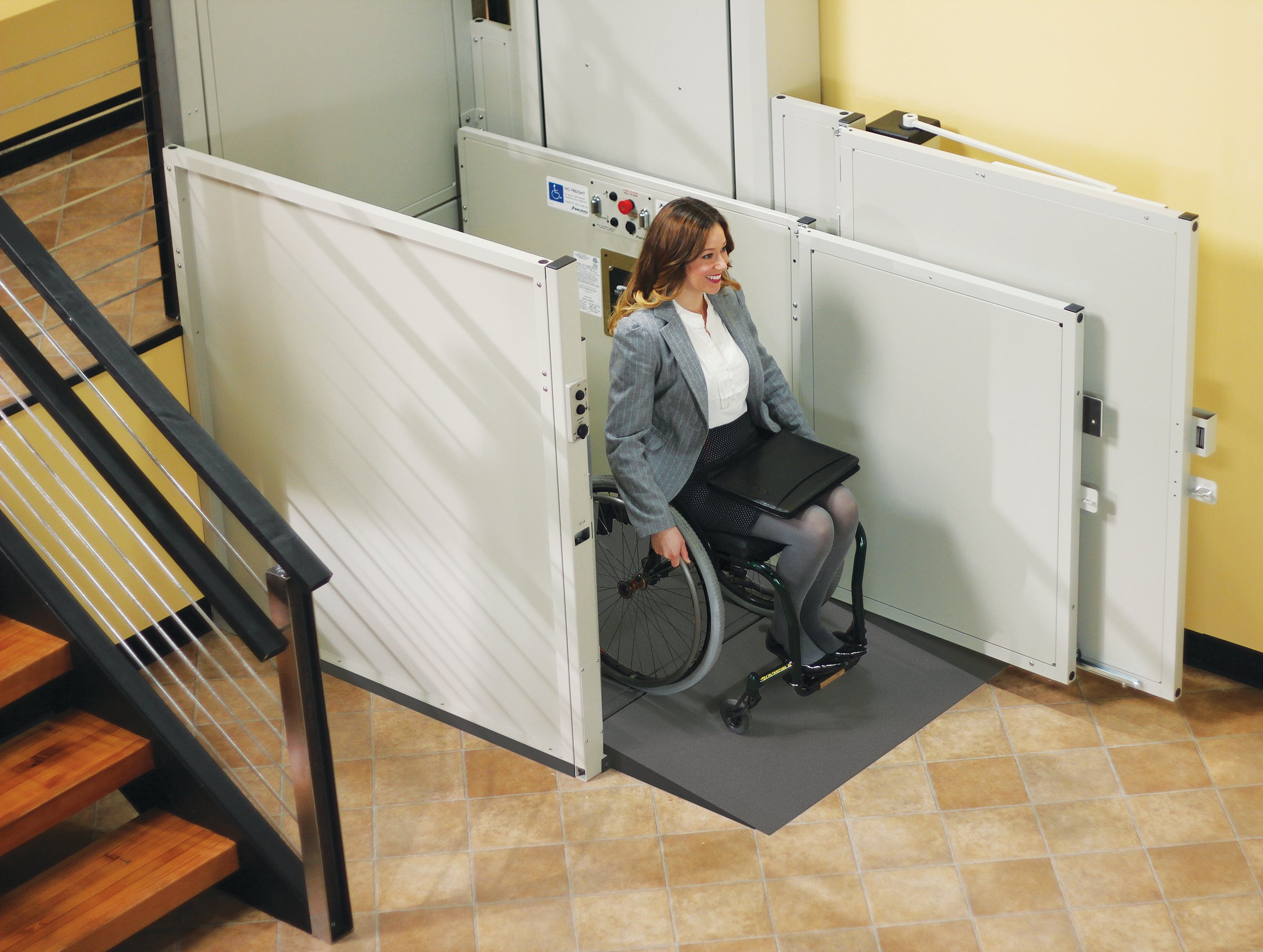School Accessible Solutions for Persons with a Physical Disability
Posted on by Paul Bergantino
 If you have worked in or been to an elementary, middle, high school, or even a university lately, you may have noticed that there are many diverse situations that need to be accommodated for: wheelchairs, walkers, space for physical and occupational therapy, barrier-free playground equipment, etc.
If you have worked in or been to an elementary, middle, high school, or even a university lately, you may have noticed that there are many diverse situations that need to be accommodated for: wheelchairs, walkers, space for physical and occupational therapy, barrier-free playground equipment, etc.
Many schools throughout the country are older and were not built with these accommodations in mind, and despite the Americans with Disabilities Act, some schools are not as compliant as they could be. So, if you are an administrator looking to adapt your school’s environment for students with disabilities or a parent wanting more access, read on for more tips on accessibility!
Wheelchair Ramps
 One of the easiest and most cost-effective modifications that can be made is the addition of a wheelchair ramp. They come in a multitude of sizes, shapes, and designs and not only allow for ease of use with wheelchairs but also for able-bodied individuals. Many have knurled and slotted surfaces that will shed water and ice for safe travel under any condition.
One of the easiest and most cost-effective modifications that can be made is the addition of a wheelchair ramp. They come in a multitude of sizes, shapes, and designs and not only allow for ease of use with wheelchairs but also for able-bodied individuals. Many have knurled and slotted surfaces that will shed water and ice for safe travel under any condition.
Automatic Door Openers
 Slightly more complicated are automatic door opener systems. These systems allow remote entry by push button, either near the door itself or from an office. These doors make sense from a security standpoint as well, as they can be programmed to be locked and only opened from inside the building.
Slightly more complicated are automatic door opener systems. These systems allow remote entry by push button, either near the door itself or from an office. These doors make sense from a security standpoint as well, as they can be programmed to be locked and only opened from inside the building.
Platform Wheelchair Lifts
- When a wheelchair ramp is not an option due to limited space, a vertical or inclined platform wheelchair lift (below right) is an effective solution for providing access for wheelchair users. Learn more about the difference between the two solutions to better determine which option is best for your school.
Accessible Desks
- Sitting in a wheelchair, or standing in a standing frame, depending on the height, can place the user in an awkward position to complete tasks, especially writing or using a computer. These types of desks allow for height and angle adjustability to optimize functional use and comfort.
Bathroom Safety Products
- Easy modifications can be made to the bathroom to improve access: the addition of grab bars at particular points will make transferring between the wheelchair and toilet easier and changing out a faucet for one with larger handles (think paddles, not knobs) will make hand washing easier as will automatic soap and towel dispensers placed in reachable positions.

Lunch & Fun Time
- Appropriate height of the lunch tables is an important part of being able to eat and swallow safely. Lightweight, portable platform ramps can be used under wheelchairs to raise them up to standard height tables to allow younger children to sit with their friends.
- Every child wants to have fun during recess, but traditional playgrounds make it difficult or impossible to gain wheelchair access. Simple solutions, like the one shown here, allow the ground cover to remain in place while giving wheelchairs access. Other solutions include elevated sandboxes, ground height roll-up merry-go rounds and swings, and even zip lines that have specialized seating for those with abnormal muscle tone.
In order to follow ADA guidelines, schools are required to offer wheelchair or handicap accessibility for students. Depending on the age and condition of the building, Lifeway Mobility will offer portable, temporary, and permanent accessibility solutions for your school as well as a free on-site evaluation from our CAPS- and CEAC-certified team members. Visit us at http://resources.lifewaymobility.com/commercial-ramps-school-universities-ct-ma/ for more information. Beginning the process now will put you on a good course to have necessary adaptations in place by the beginning of the next school year.
